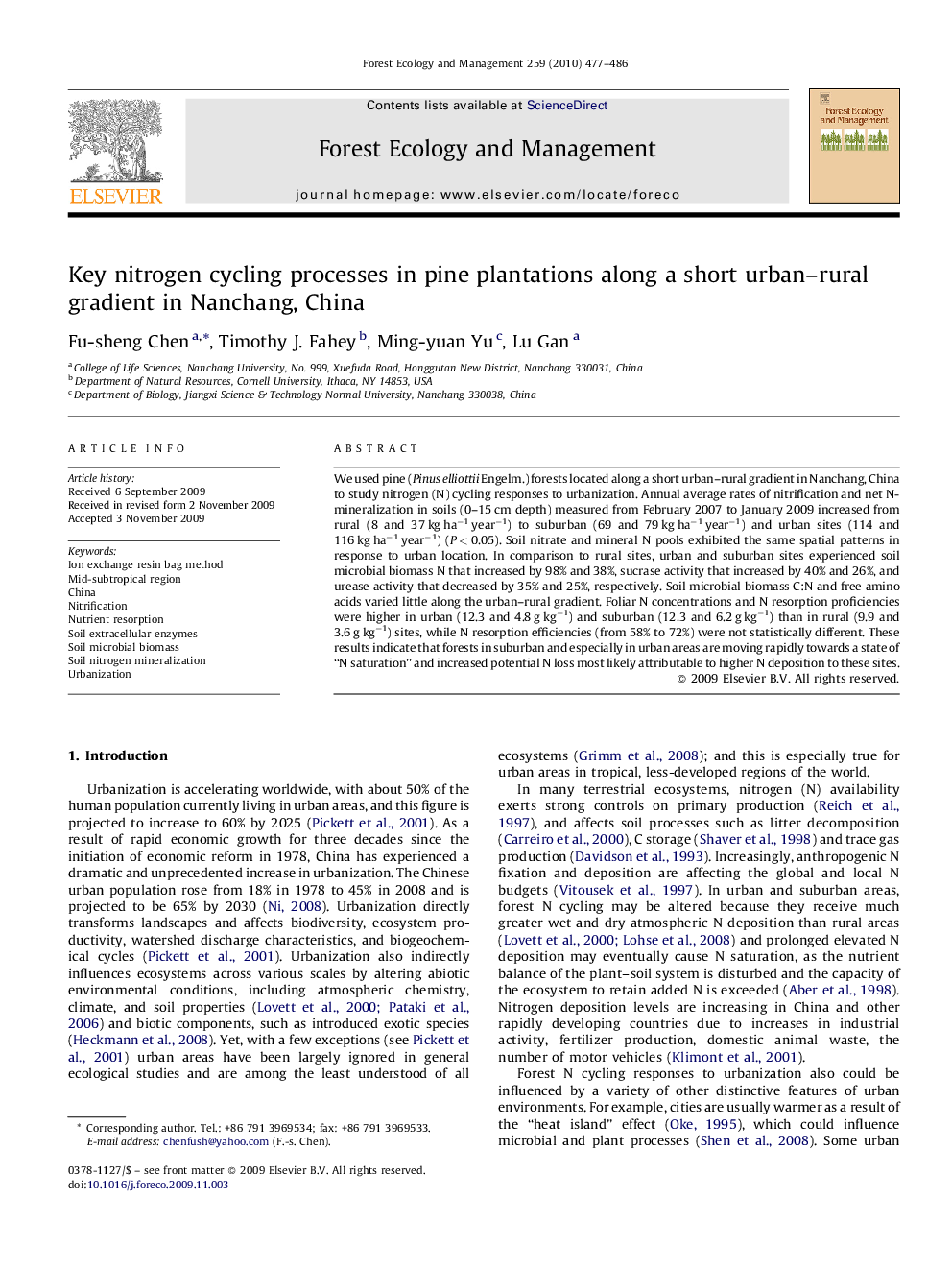| Article ID | Journal | Published Year | Pages | File Type |
|---|---|---|---|---|
| 10250583 | Forest Ecology and Management | 2010 | 10 Pages |
Abstract
We used pine (Pinus elliottii Engelm.) forests located along a short urban-rural gradient in Nanchang, China to study nitrogen (N) cycling responses to urbanization. Annual average rates of nitrification and net N-mineralization in soils (0-15 cm depth) measured from February 2007 to January 2009 increased from rural (8 and 37 kg haâ1 yearâ1) to suburban (69 and 79 kg haâ1 yearâ1) and urban sites (114 and 116 kg haâ1 yearâ1) (P < 0.05). Soil nitrate and mineral N pools exhibited the same spatial patterns in response to urban location. In comparison to rural sites, urban and suburban sites experienced soil microbial biomass N that increased by 98% and 38%, sucrase activity that increased by 40% and 26%, and urease activity that decreased by 35% and 25%, respectively. Soil microbial biomass C:N and free amino acids varied little along the urban-rural gradient. Foliar N concentrations and N resorption proficiencies were higher in urban (12.3 and 4.8 g kgâ1) and suburban (12.3 and 6.2 g kgâ1) than in rural (9.9 and 3.6 g kgâ1) sites, while N resorption efficiencies (from 58% to 72%) were not statistically different. These results indicate that forests in suburban and especially in urban areas are moving rapidly towards a state of “N saturation” and increased potential N loss most likely attributable to higher N deposition to these sites.
Keywords
Related Topics
Life Sciences
Agricultural and Biological Sciences
Ecology, Evolution, Behavior and Systematics
Authors
Fu-sheng Chen, Timothy J. Fahey, Ming-yuan Yu, Lu Gan,
